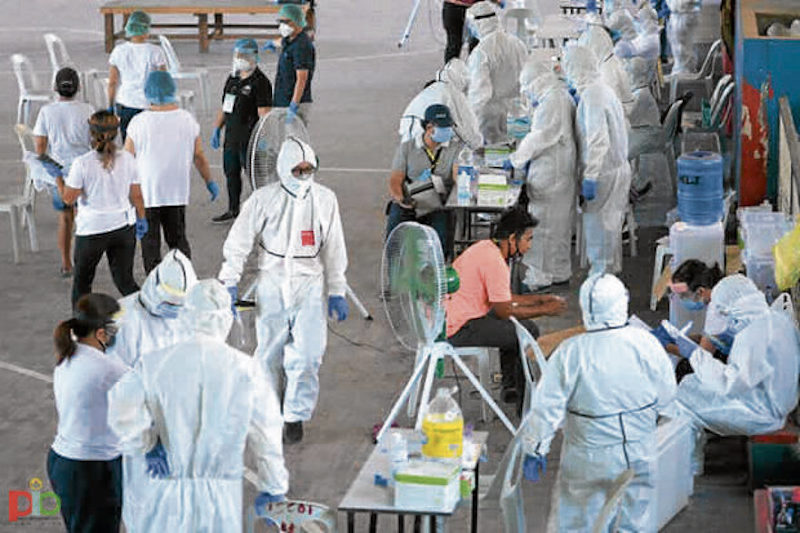On July 21, Department of Environment and Natural Resources (DENR) Secretary Roy Cimatu and other officials of the Inter-Agency Task Force for the Management of Emerging Infectious Diseases (IATF-EID) announced that 21 of the 80 barangays in Cebu City will be placed under “granular lockdown.”
The start of the granular lockdown in Cebu City’s barangays will be determined by the executive order set to be issued by Mayor Edgardo Labella.
This is despite the city downgrading from its enhanced community quarantine (ECQ) status to modified enhanced community quarantine (MECQ) last July 15, ending its position as the last city in the country to remain under ECQ.
But what is a granular lockdown?

According to the Philippine News Agency, granular lockdown is implemented in a sitio, purok or barangay, instead of an entire city or province. This is in order to impose strict quarantine protocols and more focused interventions in select small scale areas that are deemed to have the most number of active COVID-19 cases.This measure is relatively similar to the localized lockdowns implemented in Taguig City after a spike in confirmed COVID-19 cases was recorded among workers in an unnamed construction site. According to Taguig City Mayor Lino Cayetano, a localized lockdown “may mean imposing a quarantine on a house, a unit, a building or a street.”
Under granular lockdown, businesses and the economy in general can still continue. However, it must operate based on the IATF guidelines for areas under MECQ.
“The lockdown at the sitio level will be implemented by the barangay chairman and there should be a barangay lockdown plan,” said IATF in a statement.
According to Cimatu during IATF’s meeting with business leaders in Cebu City, the small scale lockdown will still be enforced by the Philippine National Police and the Armed Forces of the Philippines. These two will also coordinate with barangay officials to ensure that quarantine guidelines are being followed per sitio, purok or barangay.
It was also agreed that provisions and other essentials for residents affected by the granular lockdown will be provided by the city government.
As for Cebu City, the 21 areas to be put under granular lockdown are Lahug, Guadalupe, Capitol Site, Talamban, Kamputhaw, Mabolo, Poblacion Pardo, Tisa, Sambag, Apas, Labangon, Basak Pardo, Cogon Ramos, Punta Princesa, Sambag 2, Quiot, Zapatera, Banilad, Hipodromo, Basak San Nicolas and Cogon Pardo.
As of writing, Lahug has 38 active COVID-19 cases, the highest count among the 21 barangays. Meanwhile, Banilad, Hipodromo, Basak San Nicholas and Cogon Pardo all have seven active cases each.
According to Cebu City Councilor Joel Garganera on July 22, positive cases in the city decreased from 31 percent to 16 percent over the past month.
As of July 21, Cebu City has a total of 8,302 cases of COVID-19, which includes 3,304 active cases, 4,583 recoveries and 415 deaths. Meanwhile, the Department of Health’s tracker shows that there are 46,803 active cases out of 72,269 total cases nationwide as of July 22.
Header photo by Dale Israel for Inquirer.net (taken in Cebu City)
Get more stories like this by subscribing to our weekly newsletter here.
Read more:
One of the world’s longest-running lockdown continues with NCR under GCQ, Cebu in ECQ
What’s your contribution?: A dare from Cebu gov to doctor for criticizing her steam therapy memo
Anti-Terror Bill not yet law, but Cebu police in riot gear already came for protesters